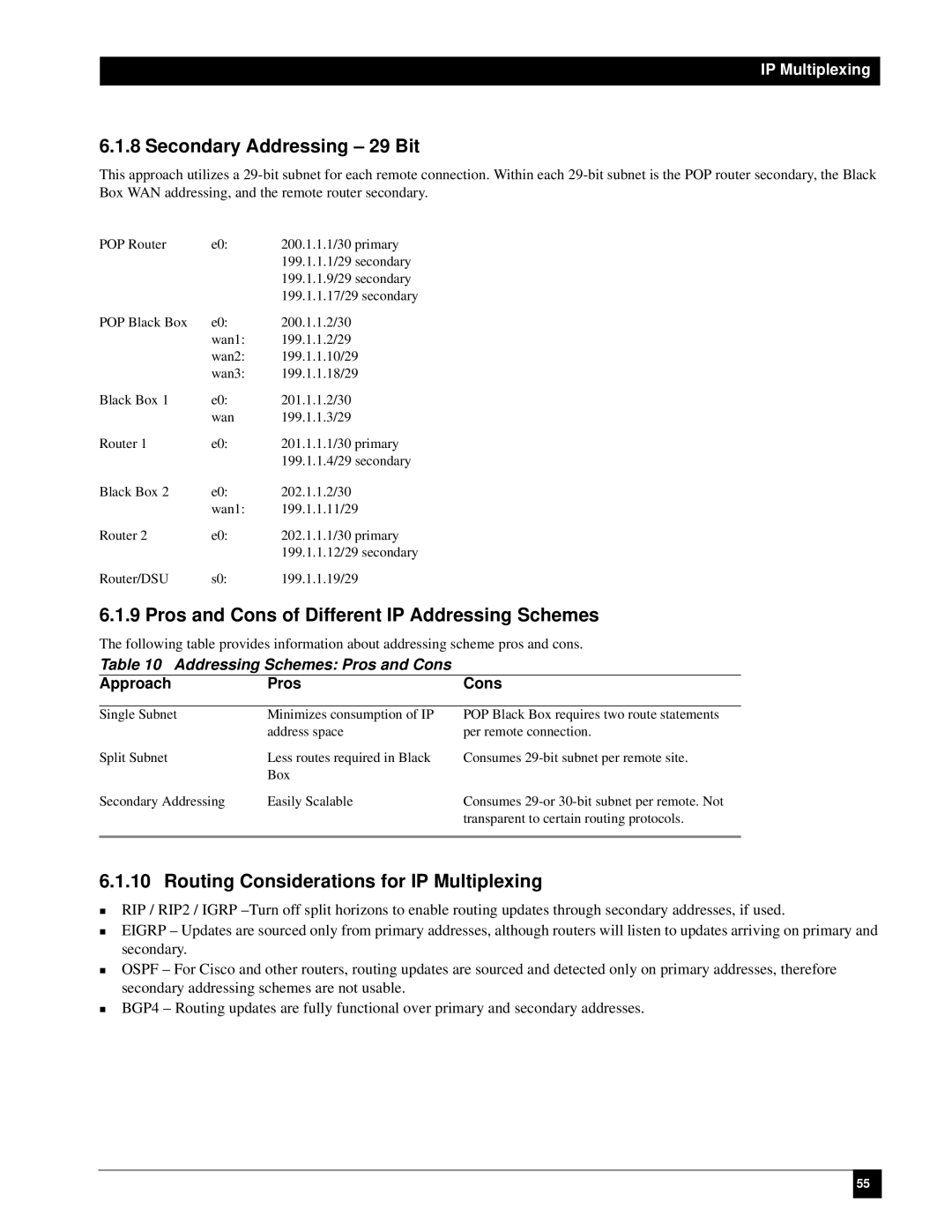
IP Multiplexing
6.1.8 Secondary Addressing – 29 Bit
This approach utilizes a
POP Router | e0: | 200.1.1.1/30 primary |
|
| 199.1.1.1/29 secondary |
|
| 199.1.1.9/29 secondary |
|
| 199.1.1.17/29 secondary |
POP Black Box | e0: | 200.1.1.2/30 |
| wan1: | 199.1.1.2/29 |
| wan2: | 199.1.1.10/29 |
| wan3: | 199.1.1.18/29 |
Black Box 1 | e0: | 201.1.1.2/30 |
| wan | 199.1.1.3/29 |
Router 1 | e0: | 201.1.1.1/30 primary |
|
| 199.1.1.4/29 secondary |
Black Box 2 | e0: | 202.1.1.2/30 |
| wan1: | 199.1.1.11/29 |
Router 2 | e0: | 202.1.1.1/30 primary |
|
| 199.1.1.12/29 secondary |
Router/DSU | s0: | 199.1.1.19/29 |
6.1.9 Pros and Cons of Different IP Addressing Schemes
The following table provides information about addressing scheme pros and cons.
Table 10 Addressing Schemes: Pros and Cons
Approach | Pros | Cons |
|
|
|
Single Subnet | Minimizes consumption of IP | POP Black Box requires two route statements |
| address space | per remote connection. |
Split Subnet | Less routes required in Black | Consumes |
| Box |
|
Secondary Addressing | Easily Scalable | Consumes |
|
| transparent to certain routing protocols. |
|
|
|
6.1.10 Routing Considerations for IP Multiplexing
RIP / RIP2 / IGRP
EIGRP – Updates are sourced only from primary addresses, although routers will listen to updates arriving on primary and secondary.
OSPF – For Cisco and other routers, routing updates are sourced and detected only on primary addresses, therefore secondary addressing schemes are not usable.
BGP4 – Routing updates are fully functional over primary and secondary addresses.
55
